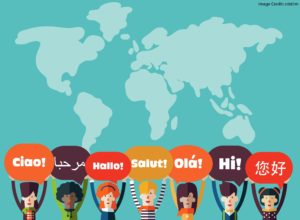Science relies on skepticism, so let’s ask a skeptical question:
“Does it really benefit teachers to understand brain research? Isn’t good teaching good teaching?”
If you’re reading this blog, you doubtless already see the value that brain research offers teachers.
The more we know about — say — motivation, or “the spacing effect,” or the benefits of interleaving, or the perils of “catastrophic failure,” the better our work can be.
But, I think there’s more.
The more time I spend in this field, the more I see benefits for school communities and even international collaboration.
Uniting Schools with Common Language
I once spent the day working at a K-12 school in Texas. At the lunch break, a teacher approached me and said:
“I’m so impressed you know all our names! I’ve worked here for years, and I don’t know the names of the high-school teachers. After all, I teach in the lower school.”
This confession speaks a larger truth: we can all-too-easily fall in the habit of talking only with our nearest peers.
3rd grade teachers confer with other 3rd grade teachers. High-school English teachers huddle up with high-school English teachers. (I should know; I’m a high-school English teacher.)
This habit makes some sense. I don’t really know how my lesson-plan for Their Eyes Were Watching God would translate to, say, a first grade classroom. What teaching topics might cross so wide a curricular gulf?
The answer: brain research.
A strategy I use to manage working memory overload for 10th graders might transfer quite easily to a 3rd grade classroom. At a minimum, the benefits of that strategy will be immediately clear to anyone who understands the importance of working memory.
When all teachers in a school know the languages of neuroscience and psychology, we can talk about our work more deeply, meaningfully, and effectively with colleagues in other grades and other disciplines.
Uniting Countries with Common Language
I spent the last two weeks in Japan, working with Fukuoka International School and the American School in Japan. In Fukuoka, I worked with teachers from about a dozen countries: the US, Canada, and Japan — and also China, Korea, Vietnam, Thailand, the Philippines, Australia … even Myanmar.
As you can imagine, these countries have dramatically different educational systems, philosophies, cultural expectations, and curricula. What shared language might these teachers find?
Here again, these teachers were amazed to see how quickly they could share teaching strategies — once they could describe them in this new way.
A game for retrieval practice, for instance, might be used with different topics in different countries. Heck, it might take place in various languages with incompatible alphabets.
But the core psychological practice remains the same, no matter the curricular or linguistic translations.
In two sentences…
I joined the Mind, Brain, & Education movement because I thought it would help make me a better teacher. Every day I see more clearly: it can make all of us — schools, districts, even international communities — a better education system.




